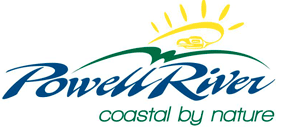Airport Snow Plow and Sweepster 2900 SWP unit 84

Summary:
The Airport truck #84 with front plow and tow-behind Sweepster 2900 is used to clear snow and ice from the Airport runway, taxiways and apron.
· Must be trained on the equipment and procedure by a qualified operator
· Air brake endorsement required
· Use appropriate PPE at all times
· Wear safety footwear with adequate grip
· Wear warm winter clothing and rain gear as needed
· Follow working alone procedure
· Must have restricted radio certification
· Communicate clearly with aircraft and other vehicles
· Must have Airside Vehicle Operating Permit
· Follow Airport snow removal plan
Hazards:
· Slips and falls
· Cold
· Entanglement
· Electrical
· Working alone
· Fatigue
· Flying debris
· Noise
· Mobile equipment
· Aircraft
· Cuts/amputation
· Pinch/crush injuries
Personal Protective Equipment (PPE) Required:
· High-visibility clothing
· Safety footwear with adequate grip
· Warm clothing and rain gear
· Gloves
· Hearing protection
Pre Set-Up:
· Perform and document pre-trip inspections on #84 and the Sweepster 2900
· Be aware of the following hazards when equipment is running:
-flying debris from Sweepster broom and blower
-entanglement in broom
-crush/pinch points at broom and front plow pivot areas
-cuts from rotating fan blades
· Make sure to unplug block heaters on both units
· Check both airport and Public Works radios for function and correct frequency
· YPW (Powell River Airport) radio frequency is 123.000
· Click radio transmit button 7 times to turn on runway lights
· Ensure proper plow, broom and blower function before proceeding
· Communicate with Weather Station contractors and Pacific Coastal staff if during daytime hours
· Follow Working Alone Procedure if no other workers are out
Task procedure:
· Call regularly on airport radio to announce position and intentions
· Follow steps in the Airport Snow Removal plan
· Avoid contact with or damage to airport runway and apron lights (high voltage). If damage is noted, report it to supervisor for repair by qualified electrician
· If snow-blower is to be used later, ensure that snow is windrowed on the asphalt
· Sweepster jack-knifes easily and is very difficult to back up
· Avoid sudden or extreme braking and maneuvering
· Runway can be extremely slippery, especially at the 09 (west) end
· Ensure no windrows or pieces of snow/ice are left at the entrance to taxiways or other aircraft maneuvering areas
· Keep in regular contact with other Public Works staff by radio
· Communicate with Parks staff regarding their movements and de-icer application
Post Procedure:
· Ensure equipment is functioning properly before parking it
· Once parked, check and top up fluids. Use caution to avoid burns from hot fluids.
· Plug in block heaters to both units
· Perform and document post-trip inspections
